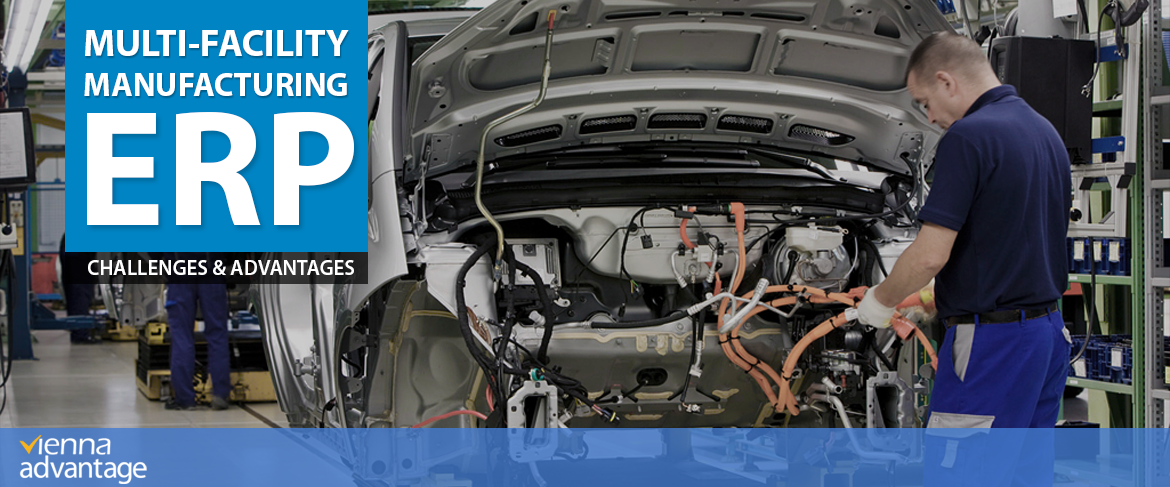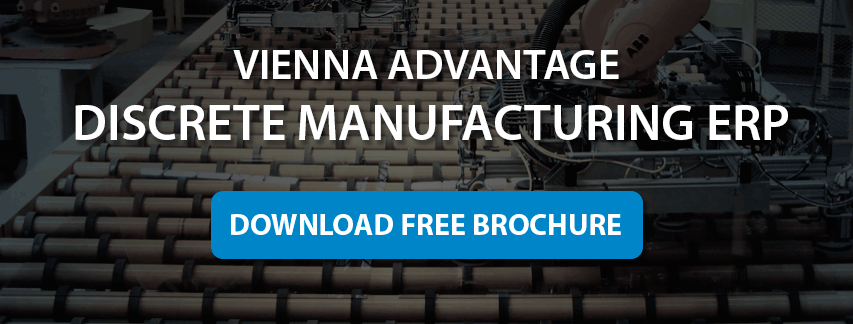In companies using manufacturing ERP, there is a good chance that they have more than one manufacturing location. Today, we are living in a global and interconnected world where companies access markets, resources and capital with ease. In order to increase efficiency and access local markets, manufacturers often set up production units across geographies. This is common practice, even for many mid-sized businesses.
Challenges of manufacturing ERP system
With the geographic growth, comes a number of challenges associated with your manufacturing ERP system. An ERP system that can imbibe the manufacturing and corporate strategy of a company, is crucial considering that decision making happens, at both, corporate and plant levels. It should have a structure to enable both centralized and independent controls.
The manufacturing ERP system should be able to distinguish between the roles and responsibilities, products, cost centers, costs, product quality & service levels, cycle times and productivity of different plants.
Another challenge for a multi-facility manufacturing ERP is the consolidation of many disparate systems which were established when new manufacturing sites were launched. This disparity can quickly spiral out of control; now may be a good time to implement a multi-facility manufacturing ERP which can offer many advantages.
“Multi-“ is the key; whether multiple organizations, accounting schemes, charts of accounts, currencies, warehouses, units of measurement (UoM), pricelists, locations, costing methods and cost centers. An ideal manufacturing ERP should accommodate the “optimum” organization structure, ensure that skilled workforce is engaged, manage support systems and good governance objectives.
Advantages of manufacturing ERP system
#1 Consolidated and standardized financials
When all production facilitates, across geographies, use the same manufacturing ERP, it would be easier and faster to produce standardized financial reports, because the accountants at each site use the same financial management module and reporting framework. Regardless of the local accounting standards and currency, a good manufacturing ERP would be able to manage multiple transactional currencies and report in a specific base currency, both, to suit local as well as international accounting standards.
#2 Centralized reporting
A multi-tenant manufacturing ERP system will allow managers to have a clear view in the corporate finances with a few clicks. Compliance reporting can be easily coordinated from a central office and distributed anywhere, across geographies, where a report is required. This brings substantial benefits for the organization in terms of cost and time reduction. The time and personnel needed to produce a corporate report decreases when the finance management is centralized.
#3 Centralized communication
Multi-facility manufacturers experience improvements in the internal communications, after implementing a multi-facility manufacturing ERP. Any user, anywhere in the world after logging into the ERP system, can see and manage workflow activities, notices, requests, tasks, appointments, notes. Users can send SMS and e-mails directly from the system and communicate with other users through an internal chat service built into the ERP system. The best manufacturing ERP systems take a step further and provide an inbuilt Document Management System.
With multi-facility manufacturing ERP, users can see the exact same sales order and the same status of the job in progress that will fulfill that order. When one user sees a problem, that problem is visible to users throughout the company and other users could proactively contribute to solve the problem.
#4 Custom ERP versions same manufacturing ERP
Depending on the scope of the activities, different manufacturing sites might produce different products using different processes or methods. This is the case when one site uses process manufacturing and another might use a discrete manufacturing method. Both manufacturing sites could use the same ERP core, but there would be some customization depending on the specific scope of activities. Even when one site requires a highly specialized ERP, the two systems could be integrated so that data could flow from the specialized system to the common one, since they would all use the same database.
#5 Shared process& best practices
Implementing multi-facility manufacturing ERP often means standardization of some processes and helps sharing the best practices across manufacturing sites. When users at one manufacturing site improve their processes, users at another site might only need to update settings in their local version of the same manufacturing ERP to reproduce those improvements.





